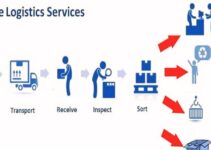Keith Oliver floated the term “supply chain management” first in 1982 in a public interview with the Financial Times. It has developed to become a separate field of study and many experts and research scholars have been using this term ever since. Today, we’ll discuss the 5 basic supply chain activities; their definitions, various strategies and models, and the SCOR model.
What is Supply Chain Management?
Before jumping into the discussion of 5 basic supply chain activities; it is significant to discuss its definition. SCM (supply chain management) focuses on the movement and flow of products and services from sourcing raw supplies and materials, production, and manufacturing, and delivering them to the end consumers. Effective SCM comprises streamlining various processes to decrease production costs and improve customer value.
However, the objective of SC managers is to develop and launch SCM processes from production and manufacturing to the delivery of goods to potential customers in the most cost-effective and productive method. SCM establishes a link between manufacturing, shipment, and distribution of goods to reduce the cost and quickly deliver the goods to the end consumers. If you develop and maintain control over the following elements; then you can achieve it;
- Inventories of vendors
- Sales
- Distribution
- Internal production
- Internal inventories
Strategies & Models of SCM
Some of the main strategies and models of supply chain management are as follows;
SCOR Model
SCOR (supply chain operations references) model comprises analyzing waste and developing standards and protocols for continuous improvement in the SCM process and system.
Flexible Model
The flexible model offers you the freedom and luxury to satisfy high demand during the peak season and deal with the volume movement in the long term.
Fast Model
The fast model is for those businesses and companies that have trending products and services and have shorter and limited product life cycles.
Efficient Model
The efficient model is for those companies that are running their business in the competitive market and it is significant for them to maintain end-to-end efficiency.
Custom Configured Model
As the name implies, custom configuration offers you customized configuration at the production and manufacturing processes.
Continuous Flow Model
The continuous flow model offers businesses and companies a high level of stability in the highly demanded market that has limited market fluctuation.
Agile Model
The agile model is for those companies that are dealing with specialty-ordered items.
SCOR Model of SCM
SCOR is a highly useful and promising business model when it comes to strategic business decision-making. It focuses on segmenting the business into various processes that would develop an environment of consistent engagement. Resultantly, it allows companies to amplify their processes both at the macro and micro level.
- Top Level: outlining content and scope for SCM processes and network
- Configuration: streamlining and configuring the company’s strategy for SCM processes
- Process Element: tuning the company’s operational strategy that comprises best practices, process performance metrics, and process element definitions
5 Basic Supply Chain Activities
Let’s discuss the 5 basic supply chain activities and they’re as follows;
Planning
Planning plays a key role for SC processes and it focuses on improving efficiency and effectiveness. It helps companies in managing operational and inventory resources. However, source planning and managing demand offer complete control over supply; demand planning amplifies a company’s capability to manage cash flow and satisfy the demands of customers. Companies employ various analytical tools to predict customer demand and plan the required raw supplies.
Sourcing
Souring is the method of recognizing vendors and suppliers that would purchase raw materials to satisfy the company’s demand efficiently. Suppliers and vendors have to follow the standards and protocols and make sure that they deliver quality products to the client company.
Producing or Manufacturing
Companies would perform various activities and processes on the raw material and transform it into the finished good based on the needs and wishes of customers. The transformation stage comprises activities like packing, testing, and assembling as a part of the SCM process. Customer feedback would help you to develop a win-win situation both for manufacturers and users.
Delivering
Delivering is the most significant element in the SCM processes because it involves direct or indirect contact with the customers. It plays a key role in establishing the brand image of the company. The final product has to satisfy the needs and wishes of customers by delivering it on time. However, companies employ various channels and mediums for delivery like rail, road, or air.
Returning
It is a post-delivery process that focuses on dealing with the returned products. It also goes by the name of reverse logistics and it focuses on recovering the relationship with customers jeopardized by the damaged product. However, the company returns the low-quality, expired, and damaged products back to the vendor and suppliers.
Conclusion: 5 Basic Supply Chain Activities
After an in-depth study of the 5 basic supply chain activities; we have realized that SCM plays a key role in the growth of businesses and companies. If you are learning about the SCM activities and processes; then you should keep in mind the abovementioned activities and models.
References
Ahsan is an accomplished researcher and has a deep insight in worldly life affairs. He goes Live 3 days a week on various social media platforms. Other than research writing, he’s a very interesting person.


